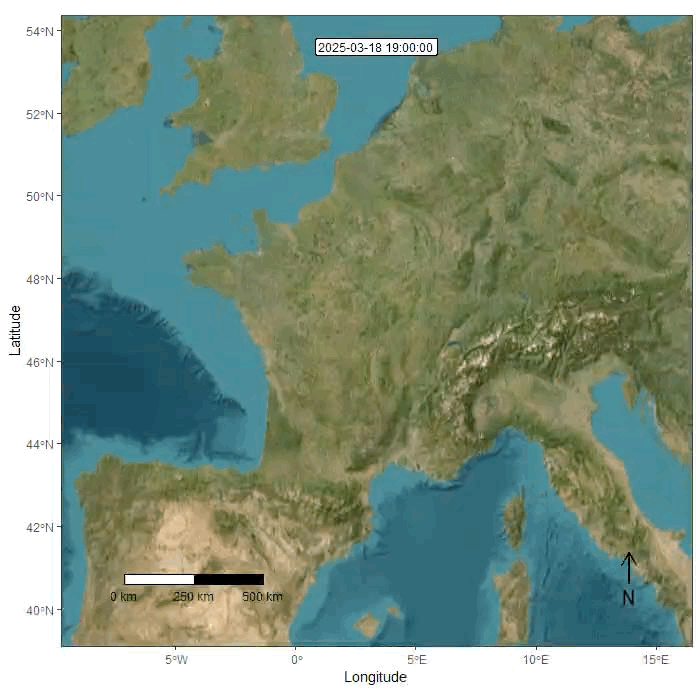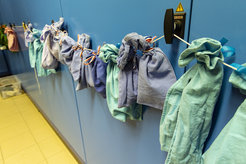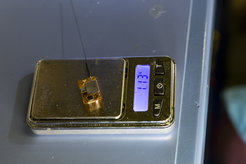
Migration as an adaptation to seasonal change
Migration is a major adaptation to changing resource conditions. We study seasonal bat migration in the African Straw-coloured fruit bat and several European species. Only by following the bats’ detailed movements, can we determine the risks and challenges of finding sufficient food and safe shelter not only at their destination, but also along the way.
A recent wave of technical developments in tracking methodology has given this field of research a much-needed boost. We can now track bats and other small migrants for several weeks to months during their seasonal migrations (see ICARUS Projects).

Using the Sigfox IoT network, we can now remotely download location and sensor data from animals throughout Europe (Wild et al. 2023). Our ICARUS Tinyfox and Nanofox tags provide intelligent summaries of acceleration, temperature, and pressure data. With these small and simple data packages, we can assess many parameters, such as activity, energy expenditure, and flight altitude. In combination with our on-the-ground captures, experiments with short-term captives, and observations, this allows us to quantify energetic costs or better understand individual movement decision-making in this risky endeavour.

For example, we found that common noctules (Nyctalus noctula) in Central Europe rely on spring storm fronts to migrate while using less energy. We are currently expanding the network, known as ICARUS Bats, across Europe with over 20 groups participating and tracking multiple bat species during their long-distance migrations across Europe. Migrating bats are under particular threat, especially from the rapidly expanding wind power industry and our data will help us understand these threats and how to - hopefully- mediate them.
Recently, we have piloted individual insect tracking during migration. Insect migration is an essential and yet poorly understood aspect of our environment. While broad-scale patterns of insect movement have been described, species and individual details of how migrations occur remain out of reach. Recently, Myles Menz and Martin Wikelski pioneered individual tracking of insects during migration with this species by following death’s-head hawkmoths by plane over a single night. We have built on their work to remotely follow these moths with Sigfox tags for days and hopefully weeks during their fall migration south across Europe.

